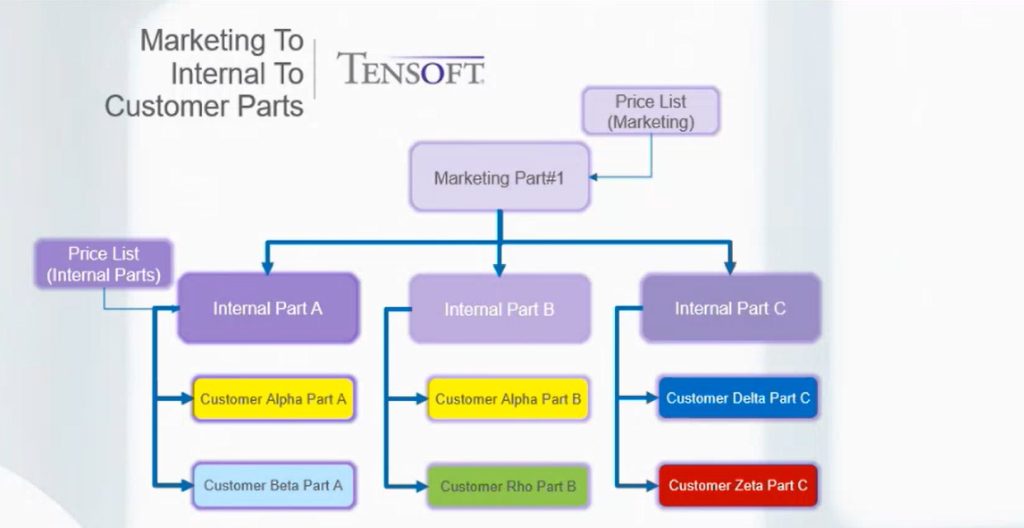 The different part types used in Tensoft SemiOps & DemandOps offer a lot of flexibility to end users to track and report parts, orders and invoices. It allows you to name and market the parts in a more customer friendly manner and be able to adapt to customers naming their own parts that are mapped to your sellable parts.
The different part types used in Tensoft SemiOps & DemandOps offer a lot of flexibility to end users to track and report parts, orders and invoices. It allows you to name and market the parts in a more customer friendly manner and be able to adapt to customers naming their own parts that are mapped to your sellable parts.
Internal Parts are sellable (Vendor/Seller) parts that exist both in SemiOps & DemandOps. Basically, these are finished goods at the end of the manufacturing process for which inventory is tracked in SemiOps.
Marketing Parts are descriptive part numbers that the end customer can relate to directly. They hide the underlying complexity of the part naming convention used by the manufacturing processes.
Customer Parts enable the end customers to have their own part numbers for procurement – they can use their part numbers for their internal tracking and reporting and have them mapped to the seller’s or vendor’s part numbers.
Service Parts are miscellaneous parts that are used for selling other items like services, consulting, and returns or corrections. It is a type of internal part that doesn’t have any physical inventory associated with it. To learn about the benefits of using service items, read this blog post.
Mapping Across Part Types
Marketing Part to Internal Part
One marketing part can be mapped to multiple internal parts. You can set an internal part to be a default for easy selection. If needed, you can change it during order creation. You can have different version numbers of the same part and track them in SemiOps using the binning process.
Internal Part to Customer Part
One internal part can be mapped to multiple customer part numbers (each of them is unique for multiple customers but not for the same customer). For example, Amazon and Apple might have their own part numbers to make it easy for them to track what they are billing or selling, but they may be all pointing to the same internal part.
Marketing Part to Internal Part to Customer Part
You can have the marketing part, internal part, and customer part related to each other. It allows you to track a very complex naming scheme generated by the combination of your marketing department as well as your customers. This is depicted in the diagram below.

Marketing Part to Service Part
One marketing part can have multiple service parts. Service parts can be used as standalone sellable items and do not have to be associated with marketing parts.
Efficiently leveraging the Parts functionality requires some planning and training within the manufacturing operations teams as well as your sales operations teams and finance teams since you’re tracking inventory valuations as they move, and the revenue based on parts sold and the invoices generated. You may need to modify your business processes to make sure that it works with most of them.
To learn more about the functionalities in Tensoft SemiOps & DemandOps, view this eBook or contact us today!